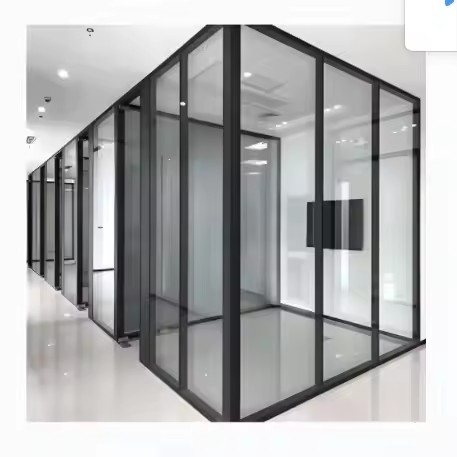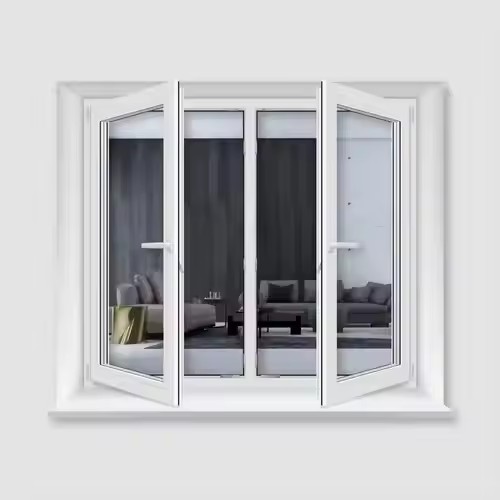I. Maintenance by Material Type: Key Focus Areas (Based on Common Australian Door and Window Materials)
- Aluminum Alloy Doors and Windows
(Most widely used in Australia – strong weather resistance, but requires protection against oxidation and salt corrosion)
Although aluminum alloys are corrosion-resistant, long-term exposure to Australia’s strong UV radiation and coastal salt spray can still lead to surface oxidation and hardware jamming. The core maintenance principle is “cleaning + lubrication + anti-oxidation.”
Cleaning frequency: once every 2–3 months (for coastal areas, once a month to prevent salt buildup).
Cleaning method:
Mix warm water with a mild neutral detergent (e.g., dish soap). Avoid acidic or alkaline cleaners like vinegar or bleach. Wipe the surface with a soft cloth or sponge; use a soft brush to remove dust from crevices.
Note: Do not use steel wool or hard brushes — these can scratch the anodized protective layer and cause later rusting or oxidation.
Special treatment:
If oxidation spots (white powder) appear, gently sand the area with fine sandpaper, then apply a specialized aluminum protector (available in Australian hardware stores, e.g., “Aluminium Protector”) to restore a protective coating.
For coastal properties, rinse the outer surface once a year with fresh water to reduce salt deposits.

Hardware maintenance:
Every three months, apply silicone-based lubricant to hinges, handles, and locks (avoid using motor oil, which attracts dust).
If the lock cylinder becomes stiff, use a small amount of graphite powder instead of oil to prevent dust buildup.
Since these fittings are metal, regular maintenance is essential for long-term performance.
- Timber Doors and Windows
(Common in high-end Australian homes – requires protection from moisture, cracking, and pests)
In humid seasons (e.g., southeastern winters), wood can absorb moisture and develop mold, while in summer, strong UV exposure can cause drying and cracking. The maintenance focus is “moisture protection + UV protection + refinishing/waxing.”
Cleaning frequency: once every 1–2 months; avoid leaving standing water.
Cleaning method: use a dry or slightly damp soft cloth. For stains, mix warm water with a mild wood furniture cleaner, then wipe dry immediately to prevent swelling.
Moisture protection:
Inspect the bottom of doors and window joints. If sealant shows cracks or peeling, replace it with neutral silicone waterproof sealant suitable for wood (avoid rigid adhesives).
In humid regions (e.g., northern Queensland), use dehumidifiers indoors or apply anti-moisture strips at the inner base of frames to prevent mold growth.
UV and crack protection:
Each spring (before UV levels peak), check if the wood surface coating or wax remains intact. If faded, peeling, or cracked, sand off the old layer and reapply exterior-grade wood paint or wood wax oil with UV protection (“UV Protection” labeled products prevent sun cracking).
Avoid placing heat sources (like air conditioner vents or heaters) near wooden doors/windows to prevent uneven drying and cracking.
Because timber doors and windows are sensitive to climate, consistent sun protection, refinishing, and sealing are essential.
Insect prevention:
During summer (active pest season), spray small amounts of eco-friendly insect repellent (such as borax-based wood preservatives) along joints between the frame and wall and into wood crevices. These are non-toxic and effective against termites and wood borers.
Homes in pest-prone regions should be especially vigilant during the insect season.

- uPVC Doors and Windows
(High cost-performance, but needs protection from UV aging and deformation)
Under Australia’s intense UV radiation, uPVC frames can yellow and become brittle. Maintenance should focus on “UV protection + shape stability.”
Cleaning frequency: once every 3 months; avoid organic solvents.
Cleaning method: use warm water mixed with a mild detergent. For stubborn stains, apply toothpaste with a soft cloth (never use hard tools). Rinse thoroughly with clean water afterward to prevent detergent residue.
UV protection:
If your frames have no UV-resistant coating, apply a uPVC protector once a year (e.g., “PVC Restorer”) to delay yellowing and brittleness.
Avoid prolonged sun exposure (especially west-facing windows). Use blinds or shades to reduce UV contact.
Shape protection:
Do not hang heavy objects (e.g., flowerpots, mops) on the frame to avoid deformation.
If you notice stiffness when opening or closing, do not force it. Check for obstructions in the track or loose hardware, and clean or adjust as needed.
II. Maintenance of Key Components: Glass, Sealant, and Hardware
(Often overlooked but crucial to overall performance)
- Glass (including double-glazed and laminated types – requires prevention of fogging and breakage)
Australian windows frequently face temperature fluctuations and hail, so the key is “preventing seal failure and impact damage.”
Cleaning:
Use glass-specific cleaners (avoid ammonia-based products that may corrode sealant). Wipe with a soft squeegee or lint-free cloth to prevent streaks.
Fogging prevention (for double glazing):
If internal fogging occurs, it indicates sealant aging or desiccant failure. Contact a professional to reseal — do not dismantle the unit yourself to avoid glass damage.
Impact and breakage prevention:
In coastal or storm-prone regions, inspect glass for cracks before typhoon season and replace if needed (especially in high-rise buildings).
Applying an anti-shatter film (with UV resistance) adds protection against impact and reduces indoor UV exposure, helping preserve furniture.
Since glass is directly exposed to sunlight and rain, surface protection significantly extends its service life.

